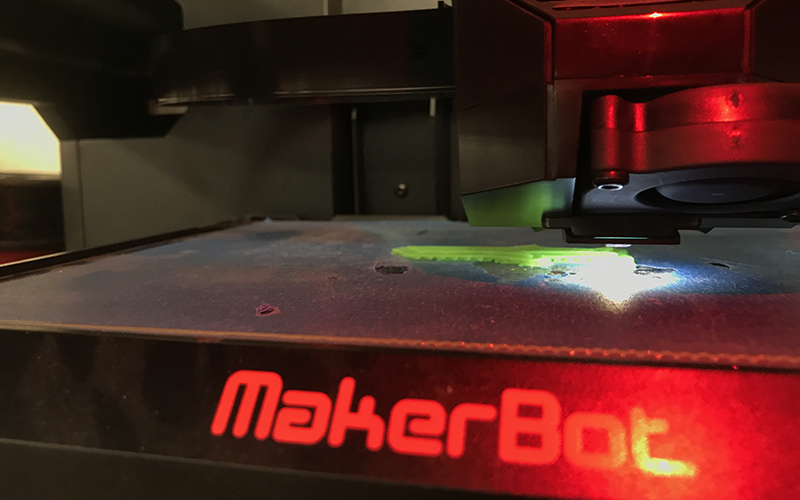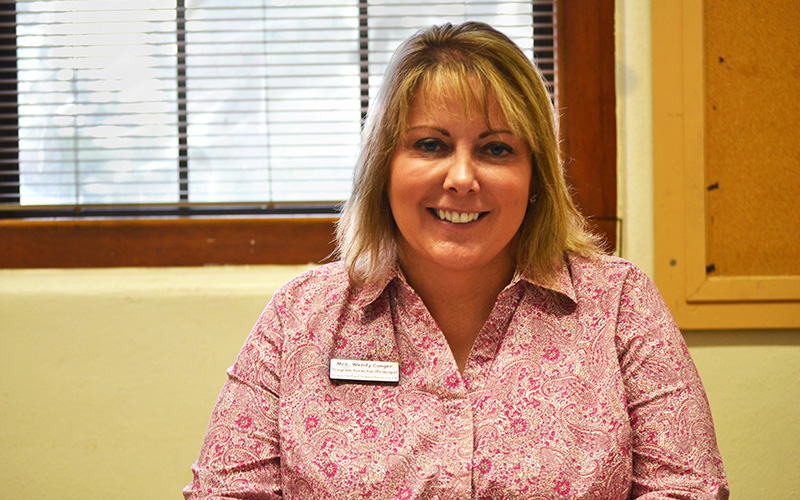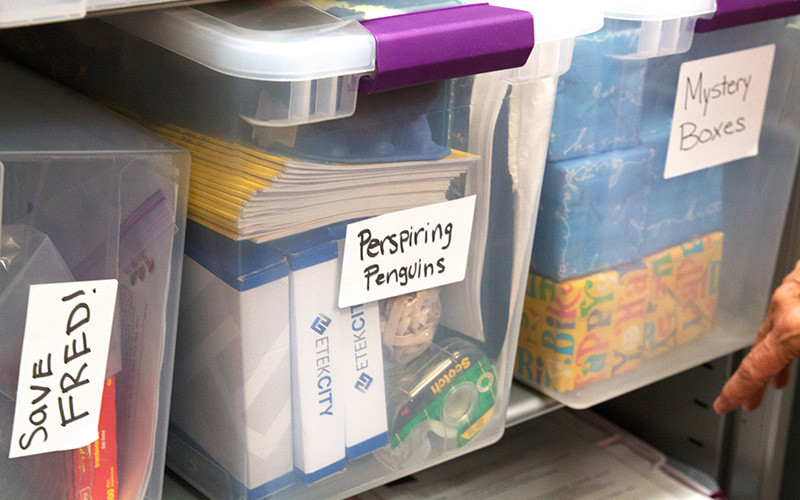HOLBROOK – Devin Etsitty, 17, remembers a time when he didn’t like science, technology, engineering or math, but teachers at Holbrook High School were determined to change his mind. They appointed him to lead a new program to promote STEM education.
Now, Etsitty wants to study high-performance motorsports at the University of Northwestern Ohio. He would be the first in his family to get a college degree.
Etsitty is a rare STEM success story. Schools in rural Arizona get less teachers, business partnerships and access to technology for STEM education than schools in metro areas, educators and business leaders said.
In many rural areas of Arizona, students are falling behind, said Linda Coyle, a former teacher and director of education at the Arizona Science Foundation.
“Rural schools struggle greatly,” said Coyle, who taught in K-12 education for 26 years. “There are schools with only one math teacher who may not be able to teach higher-level content.”
Less than 10 percent of students at 174 rural charter and public schools passed the math section of the AzMERIT test last year, according to the Arizona Department of Education. The struggles matters, as STEM education has become a major focus in classrooms across the country to fill an increasing number of demanding, new jobs.
Coyle said because Arizona’s students enter the job market lacking the right skills, the state is losing the competition to draw businesses.
“We have a favorable tax structure,” Coyle said. “The biggest problem is, we don’t have an educated workforce to fill their jobs. Any time the business has to pay to bring someone from out of state, or perhaps even out of the country, for them, actually moving here becomes a moot point.”
Robert Koerperich, the Holbrook schools superintendent, was determined to change that trajectory.

STEM education starts at the youngest grade levels in Holbrook with programmable, robotic Legos. (Photo by Madison Conner/Cronkite News)
A Holbrook teacher’s determination
“STEM in the Holbrook school district is a way to advance our kids in college and career readiness,” Koerperich said. He said STEM is useful in any career because it challenges kids to think creatively and find solutions.
Etsitty said he started liking his math and science classes after he realized they were hands-on and interactive.
“I’m not the type of person who can sit at a desk all day,” Etsitty said.
Students learn to code, use a 3-D printer, program motorized Legos and design catapults.
To do that, they needed equipment and supplies. Middle school teacher Beth Baloo dedicated herself to the cause.
“I’ve gone out and sought out my own training in STEM,” Baloo said. “I’ve sought out different ways to teach STEM, different activities.”
Baloo wrangled donations and grants to start the program.
“If a teacher comes to us with an idea, we’ll find the funding,” Koerperich said. “We do everything in our power to make it happen.”
He said community support has bolstered Holbook’s STEM program: voters have approved the district’s budget overrides over three decades.

The Holbrook Unified School District was able to obtain technology like this 3-D printer because of grants and donations. (Photo by Madison Conner/Cronkite News)
Down the road, different and similar challenges
STEM education has a different ending 250 miles south in Bowie, home to 400 people and fictional movie tough guy “Rambo,” played by Sylvester Stallone.
Bowie, near the Arizona-New Mexico border, is inhabited mainly by cattle ranchers and migrant farm workers. The town has one small store; the nearest grocery store is 24 miles away.
Wendy Conger, who heads the Bowie Unified School District, said running a rural school means recognizing Bowie students have unique needs. Educators there promote college but understand it’s not for everyone.
“We support them if they are interested but we don’t have that ‘everyone goes to college or you’re not successful’ because that’s not true,” Conger said.
The district has 60 students and four teachers who teach several topics and grade levels.
The Arizona Science Foundation says having teachers instruct multiple grade levels and subjects is common in rural areas. The foundation also said that teachers are often overburdened or underqualified to teach certain subjects.
School officials in Holbrook and Bowie said they struggle to find qualified teachers. The Holbrook district has taken a proactive approach to the issue by recruiting teachers from outside the state and offering incentives to teachers.
“We have one of the most competitive pay schedules in the state,” said Koerperich, the Holbrook Unified School District superintendent.
Conger said rural schools face additional hiring challenges because not many people are willing to live in a rural area and many teachers are not prepared for its distinctive nature.
“We don’t just want a qualified teacher. We want the right teacher,” Conger said.
Records from the Arizona Department of Education show 36 percent of Arizona teachers do not hold a certificate in the subject they taught during the 2017 school year.
Finding someone who is qualified to teach advanced subjects like Advanced Placement physics or calculus is tough, Coyle said.
The Bowie district moved 75 percent of its high school classes online and has one in-person teacher to assist high school students. Conger said the district made the switch a couple years ago because it was the only way to offer AP and dual enrollment college classes to their high school students.

Wendy Conger, Bowie schools principal, poses for a portrait in her office. Conger has worked in the education field for more than 30 years and said she loves working in Bowie. (Photo by Lauren Marshall/Cronkite News)
Learning to work creatively
Administrators and teachers in rural schools who are dedicated to student learning have to be creative. Something as basic as internet is often limited. And business partnerships just aren’t available with companies like an Intel hundreds of miles away.
“I think that the hardest part for us is community partnership,” Baloo, the Holbrook teacher, said. “Aside from local businesses, there aren’t that many companies that we can partner with.”
Holbrook draws many students from the Navajo Nation reservation, less than 30 minutes away.
“Some of our students drive up to two hours to get to school everyday,” Koerperich said. “I think that shows how dedicated they are.”
At Bowie schools, the lack of resources is more pronounced. They do not have the technology that Holbrook schools do.
Kathy Murphy, who teaches sixth through eighth grade in Bowie, said rural teachers have to be better at planning. If a teacher forgets supplies, they can’t just go to the corner store. And the town’s public library closes before the school day ends.
And work can take precedence over school in a town of migrant workers and cattle ranchers.
“Many of our students’ parents can’t always be with them to help with school,” Conger said. “Not because they don’t want to, but because they are in the field starting at 4 a.m.”
Conger said 99 percent of Bowie’s students are on the free or reduced lunch program. She said many of parents do not always feel their children need to pursue an education because they could be taking that time to work.
Still, Bowie teachers do all they can to help educate students. Conger said teachers drive students to school who don’t have a ride. When a group of students wanted to go to a STEM event in Tucson, Conger said she used her own money to pay for registration and take kids to the event.

Mo Walters said teachers in Arizona are discouraged by low pay and a lack of classroom supplies. She said that many teachers have to buy supplies for their own classroom, but businesses do not expect employees to pay for their offices supplies. (Photo by Lauren Marshall/Cronkite News)
Gaining some financial help
Coyle said one thing is clear: STEM is in demand and teachers are needed to develop STEM programs.
Rural schools might get some relief. Arizona schools next year are scheduled to receive $10 million in state and federal funding to expand broadband internet access to rural areas.
“Broadband would be a lifesaver,” Murphy said.
Broadband would also give school districts access to online teachers who could teach STEM-related courses.
A law passed this year also will bolster teacher training. The state will reimburse teachers who go back to school to earn more certificates and learn how to teach more subjects.
Murphy said she will use the reimbursement program to further her own education.
“We don’t let us being small stop us from providing opportunities for students,” Conger said. “We always find a way to make sure the kids get those opportunities.”